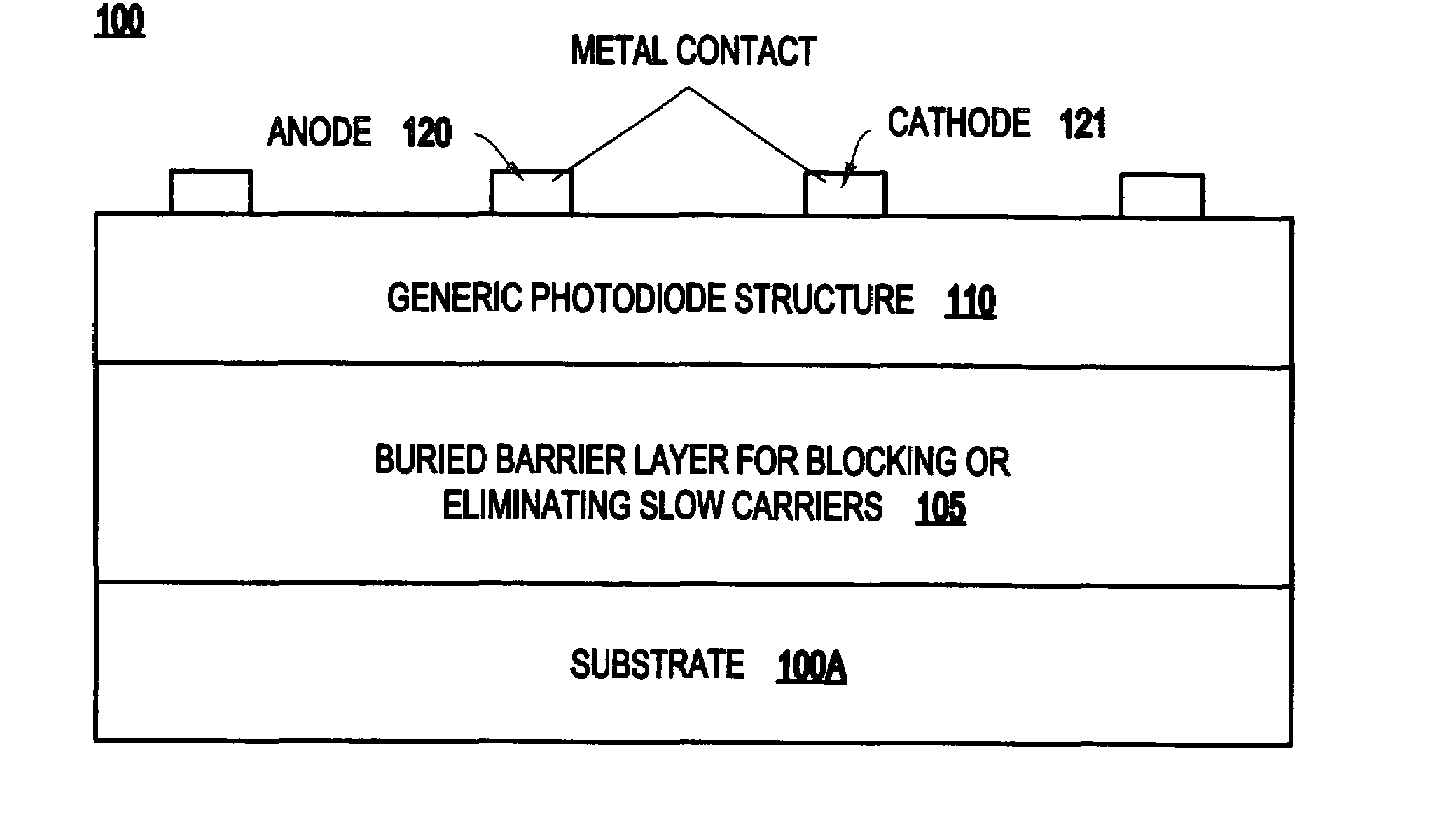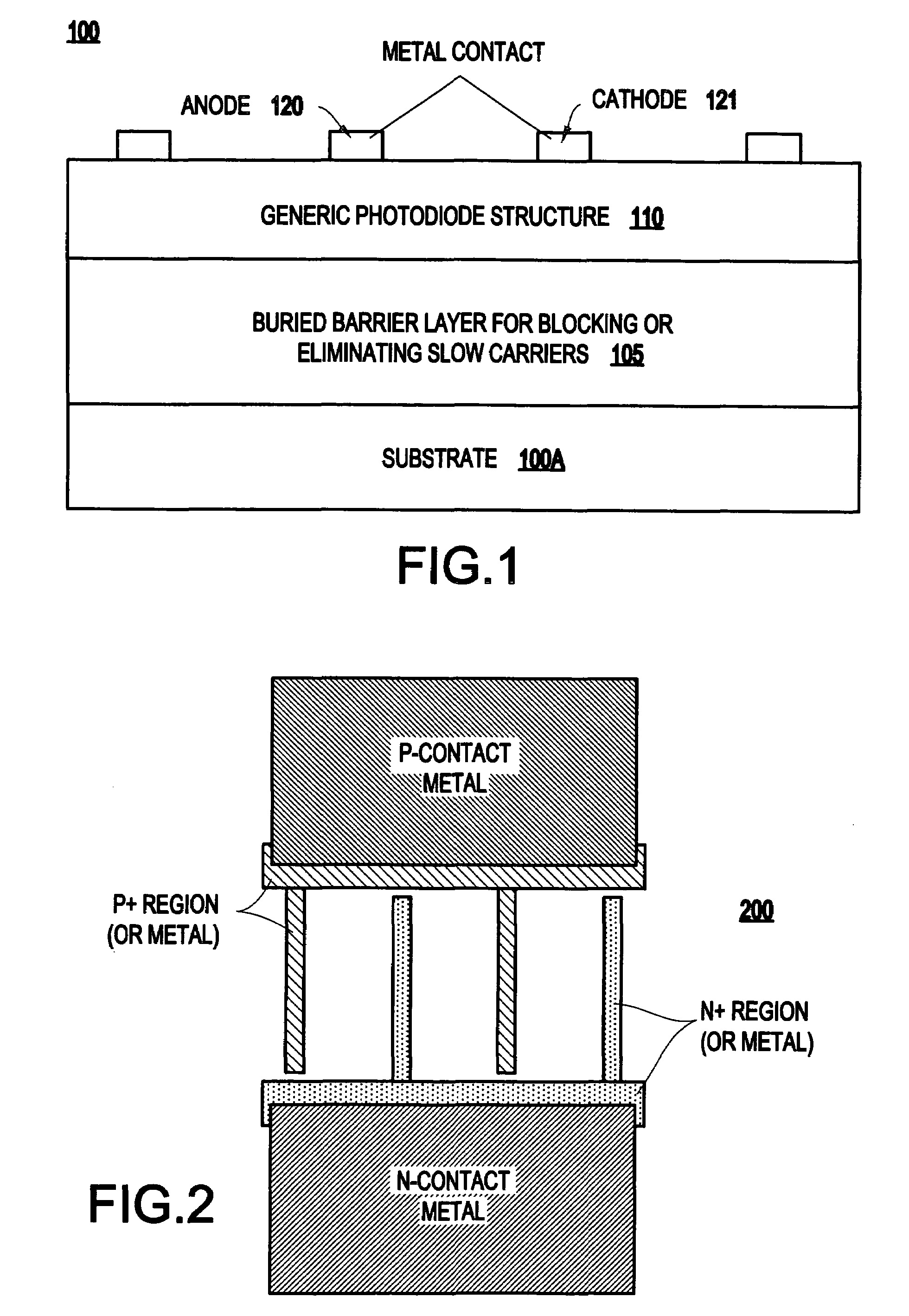High speed photodiode with a barrier layer for blocking or eliminating slow photonic carriers and method for forming same
a photonic carrier and barrier layer technology, applied in the field of photodiodes, can solve the problems of difficult to distinguish one bit from the other, inability to transfer information in a long tail, and weak electric field which is induced deep in the semiconductor, so as to reduce the lifetime of the carrier
- Summary
- Abstract
- Description
- Claims
- Application Information
AI Technical Summary
Benefits of technology
Problems solved by technology
Method used
Image
Examples
first embodiment
[0083]Thus, the present invention provides a buried PN junction as a barrier layer by forming an implant or the like, and forms an electric barrier to the slow carriers which are absorbed below the PN junction. It is noted that this barrier layer does not necessarily instantly eliminate the slow carriers, but instead blocks the slow carriers from drifting upwardly to the anode and cathode contacts.
[0084]Additionally, in this embodiment, it is noted that the PN junction can be formed with relatively low doping, as opposed to high doping levels as used in the conventional techniques. This will overcome the issues of the processing of the conventional techniques discussed above, including diffusion, etc.
[0085]B. A Bubble Layer as a Barrier
second embodiment
[0086]Turning now to the present invention and FIGS. 9–11, a bubble layer is provided to block and eliminate the slow carriers. The annihilation of the carriers is achieved through very efficient recombination centers introduced by the bubbles and by defects formed between the bubbles.
[0087]FIG. 10 illustrates a structure including a substrate 1000A having a photodiode structure formed over a buried bubble layer 1050. The photodiode structure is a lateral PIN detector with an absorption region 1020, and alternating p+ (1010) and n+ (1011) fingers.
[0088]FIGS. 9 and 11 illustrate similar barrier regions incorporated into lateral trench detector and a metal-semiconductor-metal (MSM) photodetector, respectively.
[0089]Specifically, FIG. 9 illustrates a structure including a substrate 900A having a photodiode structure formed over a buried bubble layer 950. The photodiode structure is a lateral trench PIN detector with an absorption region 920, and alternating n+ (910) and p+ (911) deep t...
PUM
 Login to View More
Login to View More Abstract
Description
Claims
Application Information
 Login to View More
Login to View More - R&D
- Intellectual Property
- Life Sciences
- Materials
- Tech Scout
- Unparalleled Data Quality
- Higher Quality Content
- 60% Fewer Hallucinations
Browse by: Latest US Patents, China's latest patents, Technical Efficacy Thesaurus, Application Domain, Technology Topic, Popular Technical Reports.
© 2025 PatSnap. All rights reserved.Legal|Privacy policy|Modern Slavery Act Transparency Statement|Sitemap|About US| Contact US: help@patsnap.com



